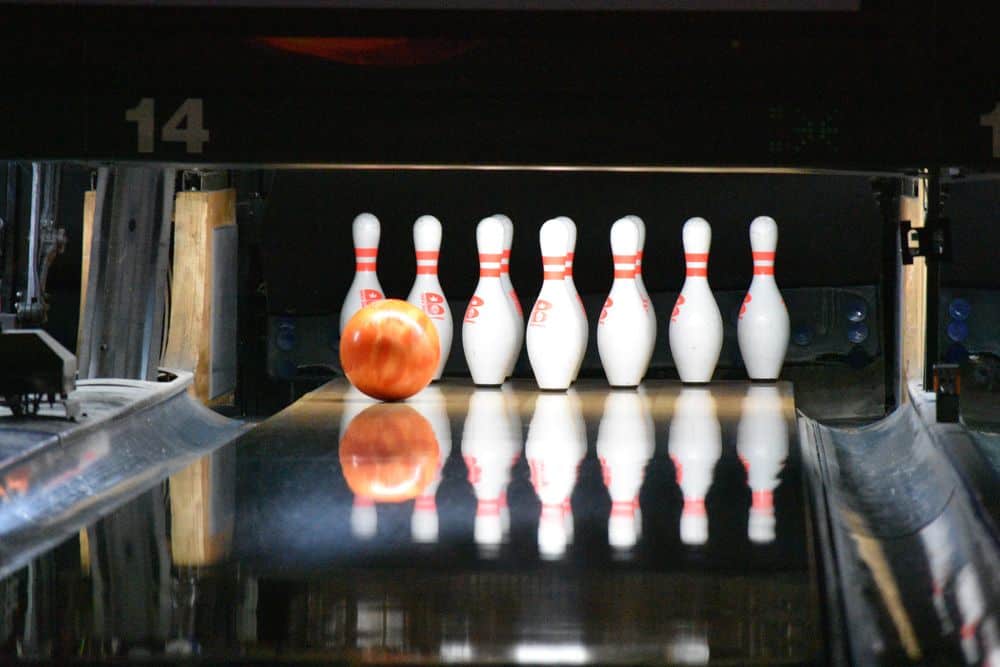Do you love bowling, but wonder where some of the unusual terminology comes from? One term that may have piqued your curiosity is ‘Brooklyn.’
When someone throws a Brooklyn shot in bowling, it means they’ve hit the opposite side of their intended target with spin, causing the ball to curve back towards the pins. But why is it called Brooklyn?
The history of bowling dates back over 5,000 years ago when ancient Egyptians played a form of the game. Bowling as we know it today originated in Germany during the Middle Ages and eventually made its way to America with European immigrants in the 17th century.
Since then, bowling has become a beloved American pastime and developed its own unique language. Understanding where terms like ‘Brooklyn’ come from can add an extra layer of appreciation for this popular sport.
The History of Bowling
You’re about to dive into the fascinating history of a sport that has captivated people for centuries, and you’ll be amazed at how much it has evolved over time.
Bowling’s early origins can be traced back thousands of years ago in ancient civilizations such as Egypt and Rome. However, the modern version of bowling as we know it today started in medieval Europe.
During this time, lawn bowling was popular among the nobility. But after Henry VIII banned the game due to its association with gambling, indoor versions of the game began to emerge.
In Germany, for example, nine-pin bowling became widely popular during the 19th century and eventually spread throughout Europe and North America.
Bowling’s popularity continued to grow throughout the decades until it became a mainstream sport enjoyed by millions around the world. Today, there are numerous variations of bowling including ten-pin bowling which is played on a standard lane with ten pins arranged in a triangle shape.
And now that you know a bit more about its interesting history, you can appreciate this fantastic sport even more!
How Bowling Terminology Evolved
As the popularity of the sport grew, so did the creative language used to describe the various moves and techniques utilized by players. The evolution of terminology in bowling can be attributed to regional influences, as well as technological advancements that changed the way people played. With each new development, new terms emerged to describe these changes.
One example is the term ‘Brooklyn.’ This is used when a bowler hits the opposite side of their intended target. It’s said to have originated in New York City, where it was common for bowlers to cross over into another borough while playing. The term caught on and became widely accepted across different regions.
Another term that evolved is ‘strike.’ This refers to knocking down all ten pins with one ball. Originally, this was called a ‘double,’ but it eventually changed due to its similarity with other sports like baseball and tennis. It’s now a staple term in bowling lingo.
Overall, the evolution of bowling terminology reflects how much the sport has grown over time. As new techniques were developed and different regions embraced their own unique styles of play, new words emerged to articulate these changes.
Whether you’re an avid bowler or just someone who enjoys watching from afar, understanding this language will give you a deeper appreciation for this popular pastime.
What is a ‘Brooklyn’ Shot?
Have you ever hit the opposite side of your intended target while bowling, resulting in a surprising and sometimes fortunate strike? That’s what’s known as a ‘Brooklyn’ shot.
This term originated from Brooklyn, New York where bowlers would intentionally aim for the other side of the headpin to increase their chances of getting a strike due to the pin action.
One of the most famous Brooklyn shots was made by Pete Weber during a PBA Tour event in 2001. He needed a strike to win the tournament and ended up hitting the Brooklyn side to secure his victory.
Another notable example is when Don Johnson threw three consecutive Brooklyn strikes in a row during the 1970s, leading him to be nicknamed ‘Mr. Brooklyn’.
While some bowlers may intentionally aim for Brooklyn shots due to its success rate, it is generally not recommended as it can result in fewer strikes and lower scores overall.
To avoid making unintentional Brooklyn shots, try adjusting your stance or aiming point on the lane. It’s also important to focus on your release and follow-through technique to ensure your ball goes where you intend it to go.
The Origins of the Term ‘Brooklyn’
It’s funny how a term that originated from a specific place and activity, like Brooklyn and bowling, can become so widely recognized and used outside of its original context. The term ‘Brooklyn’ in bowling refers to when the ball crosses over to the opposite side of the headpin, hitting it from left to right for right-handed bowlers and vice versa for lefties. But where did this term come from? Let’s explore its etymology and historical context.
-
The term ‘Brooklyn’ in bowling is said to have originated in New York City during the 1940s or 1950s.
-
It was named after Brooklyn, a borough in NYC known for its rough-and-tumble reputation.
-
At the time, many bowlers would cross over to Brooklyn because it was considered an easier shot due to the angle of entry into the pocket.
-
Over time, this term spread beyond NYC and became part of common bowling lingo around the world.
The origins of terms like ‘Brooklyn’ remind us that words and language are constantly evolving. They also show us how culture influences language use. In this case, we see how a specific place (Brooklyn) and activity (bowling) intersected with each other to create a new meaning that has endured for decades.
Whether you’re a seasoned bowler or just starting out, understanding these linguistic quirks can add depth to your appreciation of the sport. So next time you hear someone say ‘That shot went Brooklyn,’ you’ll know exactly what they mean – even if you’ve never set foot in NYC or picked up a bowling ball before!
Other Bowling Terms You Should Know
If you’re new to bowling or just want to impress your friends with some insider knowledge, here are a few other terms you should add to your vocabulary.
First off, it’s important to understand common bowling etiquette. When it’s your turn, step up to the approach and wait for the machine to reset pins before taking your shot. Also, avoid stepping over the foul line as this may cause injury and disrupt play.
Next, familiarize yourself with popular bowling leagues such as the Professional Bowlers Association (PBA) and the United States Bowling Congress (USBC). These organizations host tournaments and competitions where bowlers can showcase their skills and compete for prizes. Knowing which league is hosting an event can be helpful in understanding its rules and regulations.
Finally, there are several other bowling terms worth mentioning such as ‘gutter ball’ (when the ball rolls into one of the gutters instead of hitting any pins), ‘turkey’ (three strikes in a row), and ‘spare’ (knocking down all remaining pins on a second attempt). By learning these terms, you’ll not only gain a better understanding of the game but also impress others with your knowledge.
Conclusion
Congratulations, now you know the origins behind the term ‘Brooklyn’ in bowling.
As you’ve learned, bowling has a rich history that spans centuries and its terminology evolved over time. The ‘Brooklyn’ shot is when the ball hits the opposite side of the headpin than intended and it’s considered an unorthodox or lucky shot.
The term ‘Brooklyn’ is believed to have originated in New York City, where bowlers from Brooklyn were known for their unconventional styles of play.
And while this term may be specific to bowling, there are many other terms you should know if you want to become fluent in bowling lingo. So next time you’re on the lanes with your friends, show off your knowledge by using these terms like a pro!









